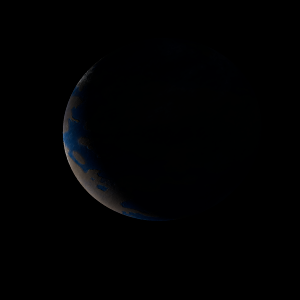|
|
Space Astro
|
Info for exoplanet "Yunqyo"
| Scientific (actual) data |
|---|
| Name | Kepler-718 b |
| Planet status | Confirmed |
| Radius | 1.477 |
| Orbital period | 2.05235 |
| Discovered | 2016 |
| Updated | 2021-02-05 |
| Tconj | 2455000 |
| Publication | Announced on a website |
| Detection type | Primary Transit |
| Alternate names | 2MASS J19581485+4330128 b, K00897.01, KIC 7849854 b, KOI-897 b, KOI-897.01, WISE J195814.84+433012.6 b |
| Star name | Kepler-718 |
| Right ascension | 299.56° |
| Declination | 43.5° |
| Mag j | 14.005 |
| Mag h | 13.679 |
| Mag k | 13.604 |
| Star distance | 1520 |
| Star metallicity | 0.06 |
| Star mass | 1.18 |
| Star radius | 1.3 |
| Star age | 2.57 |
| Star temperature | 6191 |
| Star alternate names | 2MASS J19581485+4330128, KIC 7849854, KOI-897, WISE J195814.84+433012.6 |
| Wikipedia article | Kepler-718 b |
Back
| |
| Fictional info (?) |
|---|
| Suggested name | Yunqyo |
| Planet type | Cold planet |
| It is a cold planet planet with a mass one-thousandth that of Kepler-718, but two-and-a-half times that of all the other planets in its solar system combined.
The outer atmosphere is visibly segregated into several bands at different latitudes, resulting in turbulence and storms along their interacting boundaries. A prominent result is the "great red spot", a giant storm that is known to have existed for centuries since it was first seen by telescope. |
| Atmosphere | Nitrogen | 99% |
| Helium | 0.67% |
| Atmospheric pressure | 8 bar |
 |
| Moon | Yankwan-fyou | Medium-sized round crater-filled planetoid |
| Akyerang Lyongb | Large irregular crater-filled moon |
| Ershen Kyue | Very small round crater-filled asteroid |
| Hyaqyang'nyo | Large irregular ice comet |
| Wugaih'en | Very small potato shaped oceanic planetoid |
| Ozhan'fyunz-ye | Medium-sized slightly egg-shaped crater-filled planetoid |
| Jwoq Wen | Large irregular oceanic asteroid |
| Chyu Xeix-ensh | Small round rocky comet |
| Nyinlyuan Ch | Small round rocky comet |
| Wadwanying | Medium-sized almost round rocky planetoid |
| Feiqyin | Medium-sized almost round rocky comet |
| Anghyang'bying | Very small almost round crater-filled moon |
| Qyaogweng Shweng | Medium-sized almost round rocky comet |
| Yipyao Mao | Medium-sized round crater-filled moon |
| Hying Boush Ajwai | Huge round gaseous asteroid |
| Xouzhyas | Huge irregular ice moon |
| Kangsyun | Medium-sized round rocky moon |
| Dyinkwo Ch | Large almost round ice moon |
| Baswaqwor | Huge potato shaped oceanic asteroid |
| Yimyam | Very small irregular crater-filled comet |
| Tetying Gerzh | Very small irregular crater-filled moon |
| Myan Nwen | Medium-sized irregular oceanic moon |
| Google search for Yunqyo |
|
Website by Joachim Michaelis
|
|
|
|